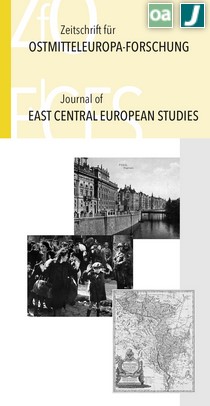The Moment between Occupation and Freedom: Forms of Collective Violence at the End of World War II in the Czech Lands
The Moment between Occupation and Freedom: Forms of Collective Violence at the End of World War II in the Czech Lands
Author(s): Jaromír MrňkaSubject(s): Military history, Studies in violence and power, WW II and following years (1940 - 1949), Fascism, Nazism and WW II, Peace and Conflict Studies
Published by: Verlag Herder-Institut
Keywords: Violence; World War II; Czechoslovakia; Prague; Expulsion of Germans;
Summary/Abstract: The paper focuses on the violent interactions that occurred in the Czech lands at the end of World War II. By analyzing the structure, forms and causes of acts of collective violence, the author attempts to answer to what extent they were the result of either spontaneous popular anger or targeted state policies. This study is a response to the conventional thesis of Czech historiography about the so-called ―wild expulsions,‖ which has misleadingly stated that, from the immediate post-war days until long into the summer of 1945, spontaneous acts of violence were persisting, for which, however, the Czechoslovak state did not bear responsibility. Unlike most previous studies, therefore, it focuses not only on the period following the liberation of Czechoslovakia, but also in more detail on the links between the waning Nazi terror, the final war operations and the outrageous post-war retaliation. Based on concrete cases of the anti-Nazi uprising and post-war Czech cleansing from Germans, the author uncovers specific actors, their mutual interactions in groups and conditions that allowed the escalation of mass atrocities. He proves that spontaneous acts of violence were associated with transitional rituals and brutalization and occurred only for a limited time of a few post-war days. Thus, at the end of the war, collective violence remained an integral part of state policy in both Nazi and Czechoslovakian rule. These two regimes relied heavily on violence specialists to exercise their power and limited the space for manifestations of spontaneous popular anger. The author stresses that the main factor influencing the dynamics of violence were two simultaneous but uneven processes: the Nazi system of government was collapsing, while the Czechoslovak state power was being restored.
Journal: Zeitschrift für Ostmitteleuropa-Forschung
- Issue Year: 69/2020
- Issue No: 4
- Page Range: 471-494
- Page Count: 24
- Language: English

